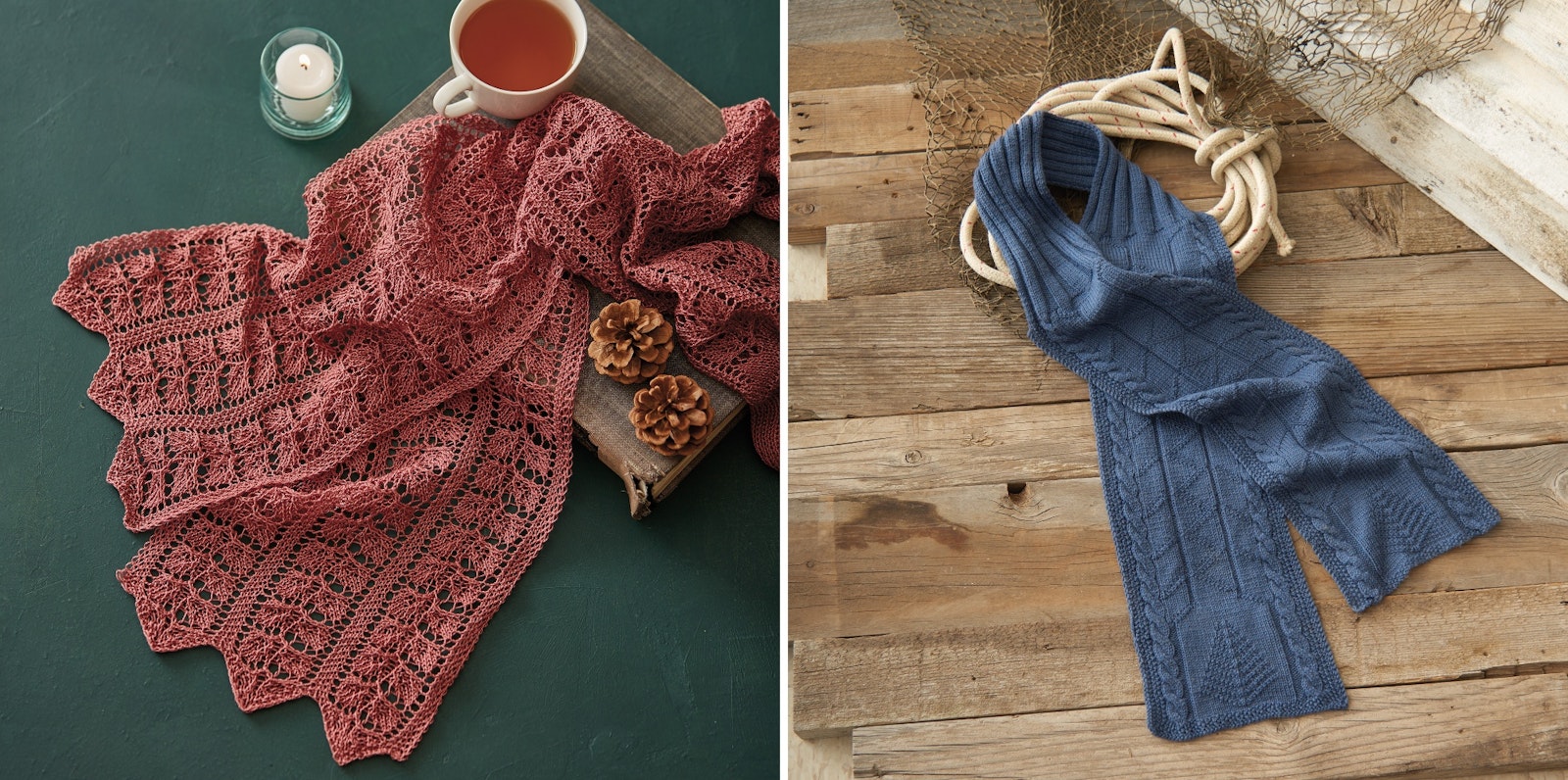One of the big questions I get asked by my knitting students is, “How long should I make my scarf?” This got me thinking. Is there a standard set of sizes for accessories? To keep from being overwhelmed by all the different types of neckwear, let’s start by focusing on two types: scarves and cowls.
Scarves
Scarves are defined as “a length or square of fabric worn around the neck or head.” The general rule of length to follow is that a scarf should be as long as the wearer is tall. Of course, this also depends on the occasion or desired look. I found three general sizes in the Long Thread Media Library.
Ascot
While an ascot is traditionally defined as a men’s wide silk necktie, it can also refer to the smallest size of scarf. This size is typically 40–50 inches long and tends to be pinned or tied at the neck or shoulder.
Standard
This is the size most people think of when they hear the word “scarf,” and they follow the height-of-the-wearer rule with an average length of 60–80 inches. Draped once over the neck, the ends of the scarf reach the waist or hip. They can be either decorative or heavy-duty for warmth.
Extended
Fans of Doctor Who will remember Tom Baker’s ever-growing scarf from the series, and scarves over 80 inches fall into this category. Length adds to the versatility of this size as they can be draped or knotted in a variety of ways to create unique looks every time the scarf is worn.
 Jen Geigley’s Loon Lake Scarf is a perfect example of an extended length scarf.
Jen Geigley’s Loon Lake Scarf is a perfect example of an extended length scarf.
Cowls
Cowls are a subcategory of scarves that are circular and have a similar range of sizes. They can start out as scarves and have their short ends grafted together, knitted in the round from one edge to the other or even donut style which creates a double layer with the wrong side hidden in the tube of kntting.
Rings or Cowlettes
Rings are at the smaller end of the spectrum of cowls, with an average circumference of 22–25 inches. This length is large enough to fit over the head to rest around the neck and touch the top of the sternum. The width can vary, with a popular style being wider, allowing the wearer to pull it up over the head in a hood or snood style.
 Olga Putano’s Tulip Fever Cowl can be pulled up over the head snood style.
Olga Putano’s Tulip Fever Cowl can be pulled up over the head snood style.
Standard Cowls
This size is what most people think of when they hear the word “cowl.” Longer than its ring counterpart, this size ranges from 30–40 inches in circumference. It should not feel claustrophobic around the neck and can be a statement piece in any wardrobe.
Infinity Scarves
Infinity scarves are long looping cowls that are typically 60–70 inches in length. Their length creates versatility in wearing options as they can be worn full-length, double-looped around the neck, or with one loop around the neck and the other acting as a hood in inclement weather.
Other Size Factors to Consider
Many other elements affect the length of your scarf, like the width of the piece, the yarn it is made of, and the overall design. Very wide pieces might not be as comfortable when made into an infinity scarf, as the double loop could be too bulky. Thicker yarns in longer pieces could also create a feeling of claustrophobia. A long lace scarf could be stunning but could also catch and snag on other items like jacket buttons. Some designs, like Fishermen’s scarves, use clever construction like ribbing to keep them in place around the neck, with motifs traveling down the front.
While these are general guidelines for determining the length of the neckwear you’ll make, ultimately, it comes down to the wearer’s preference and what the neckwear will be worn for, be it beauty or warmth. Plus, there are so many more options! Bandanas, neckerchiefs, shawls—the list goes on, and the beauty of creating something handmade is that you can adjust it to your liking.
Interested in making the Loon Lake Scarf or the Tulip Fever Cowl? Members of Farm & Fiber Knits can access them in the library. Not a member yet? Join the commmunity!
Katrina King is the assistant editor of PieceWork, an avid crafter, and continuing student of life.

